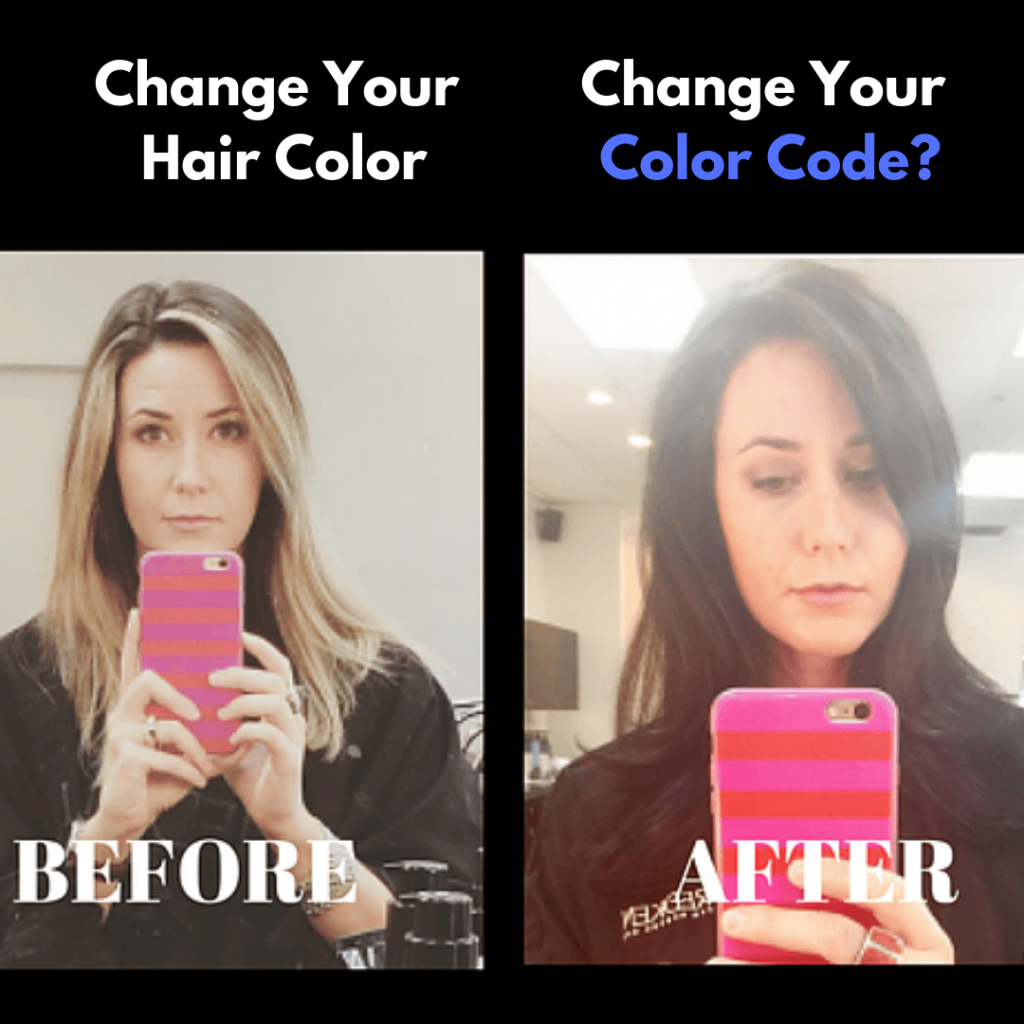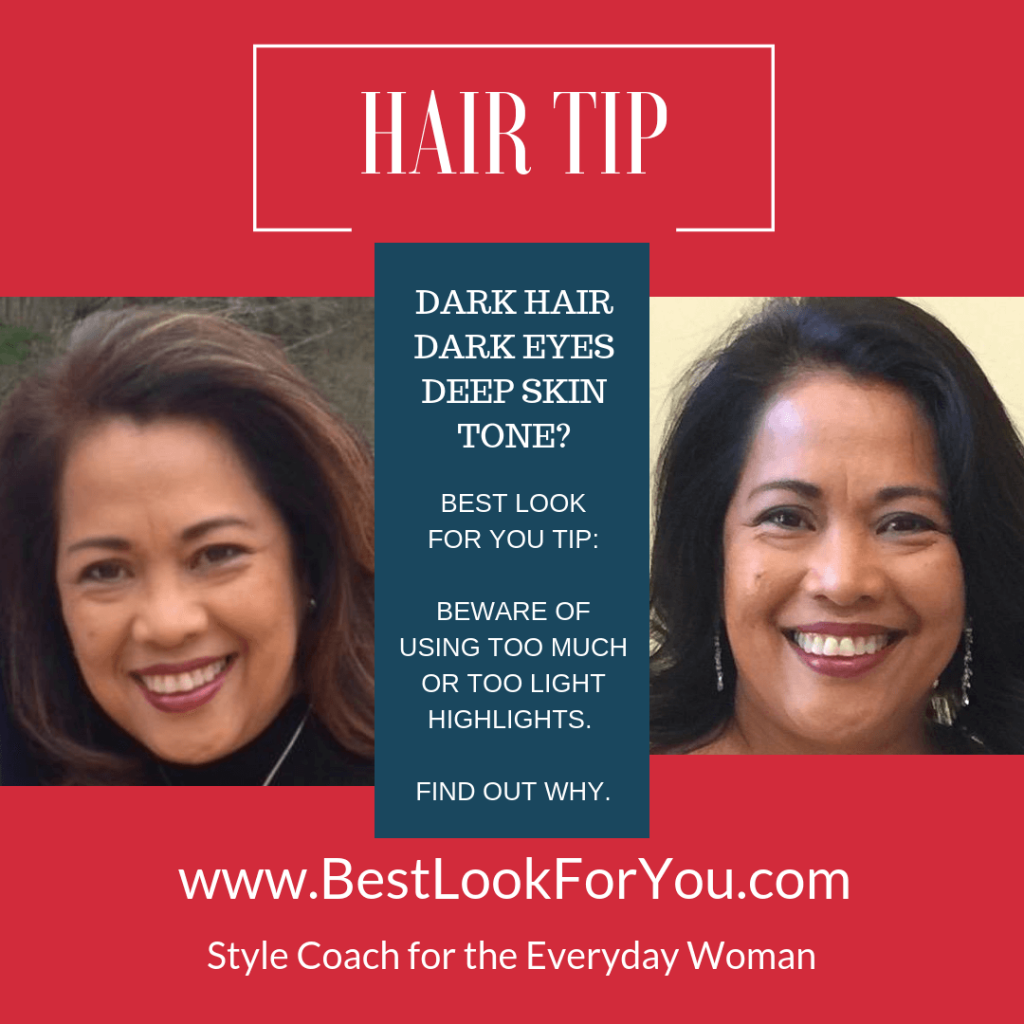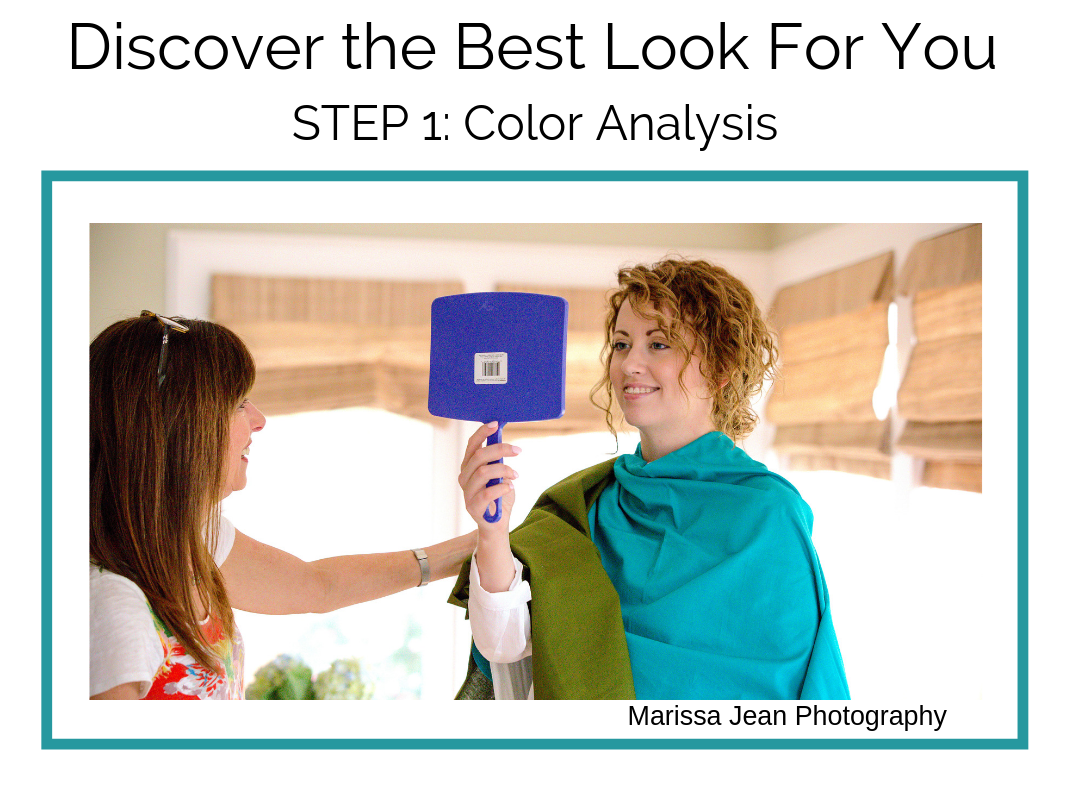
Hair Color Change
Change your hair color, change your Color Code – maybe. Hair is the most noticeable feature of the three key features used to determine your Color Code: hair, skin and eyes. There is a strong bond between your hair color and Color Code. Your Color Code helps you identify the colors that make you look your best, creating a great first and lasting impression.
If you get a color analysis and then change your hair color, the colors that were recommended for you may not work as lovely. When you start adding warm low lights, blonde highlights, or dark brown or black to cover your mousy brown grays, you are very likely affecting your Color Code. Especially if you have long hair, a lot of it, or a really strong color (ebony, red) it will make a bigger impact on your coloring and hence your Color Code.
For example, if you have dark hair, dark eyes and deep skin tone, the key to your coloring is your rich deep tones. Too much or too light of hair coloring if they are rich caramel or copper, can cross you over into a warm Color Code (red undertones).
Blonde highlights, which I see often on women with dark hair, deep skin tone and dark brown eyes, can push you into a mix of DEEP and SOFT coloring resulting in what I call a color identity crisis. What Color Code am I?
Why It Matters
Why does it matter? Before you know it, over the course of time, color treatments can leave you too far from your natural coloring and what made you a DEEP (or whatever your Color Code is), no longer applies. This is why I always tell women that if your hair color has changed since you had a color analysis, especially if it’s a dramatic change, you should have it done again.
This gal had added too much blonde over time. Her stylist advised her to go back to her natural color. WOW can you see what an improvement?

The eye tends to scan a person from head to toe. Hair is the strongest component of determining your Color Code. Therefore, when you start coloring your hair, it’s very easy to throw yourself into another Color Code.
The colors recommended for your Color Code may not look quite as good on you if your hair color has been changed more than one or two shades. Don’t freak out, though, you can still use color to your advantage.
I recommend that you keep your hair color just one or two shades at the most from your natural hair color to avoid a Color Code misdiagnosis. Keep the purity of your Color Code so that the colors recommended for you will truly look awesome on you.
Explore the benefits of getting your color analysis.

This Deep Color Code client was following my guideline to keep her highlights about two or three shades lighter, and very few of them. But I advised her to go back to her natural rich dark brown color and eliminate all the highlights. When she did, her eyes seem to sparkle more and overall she looks brighter.
Clear Color Codes
There is one exception to this general guideline of staying one to two shades of color from your natural color. If you are a CLEAR (dark hair, light skin and clear or light eye coloring) then you should never highlight your hair (but it’s fine to color your hair it’s natural color to cover up gray – shhhh, we won’t tell). That’s because the sharp contrast between your hair and skin color is what makes you a CLEAR. Highlights will diminish that high contrast by lightening your hair.
For all others, keep your hair color just a few shades from your natural color. I see so many beautiful DEEPS who have put way too much copper color on their beautiful dark brown hair and it just takes away from their gorgeous deep brown eyes, washes them out, and pushes them into a WARM Color Code. The problem with putting them into a WARM Color Code is their skin tone doesn’t align with the WARM color code, so the colors don’t work as perfect for them as their DEEP colors.
Bright Colored Hair
There is one other consideration. Have you noticed all the ‘colorful’ hair? I’m talking about the pastels in pink, green, yellow, blue, purple, etc. It’s a fun change for some. I find that the people who choose to color their hair these colors are usually creative and energized by change. Enjoy it. Recognize that your new color may not agree with your skin tone or could fade your eye color. It will probably be temporary so maybe eye shadow and lippy can create a more cohesive look with your bright hair color.
Bottom Line
Experimentation with hair color is fine. A little enhancement of color to boost dulling hair color as we age is fine. There is a strong bond between your hair color and Color Code. Unless you are covering up gray or temporarily coloring with some bright colors, stay close to your natural coloring for the best look for you.
The Master Designer makes no mistakes.
